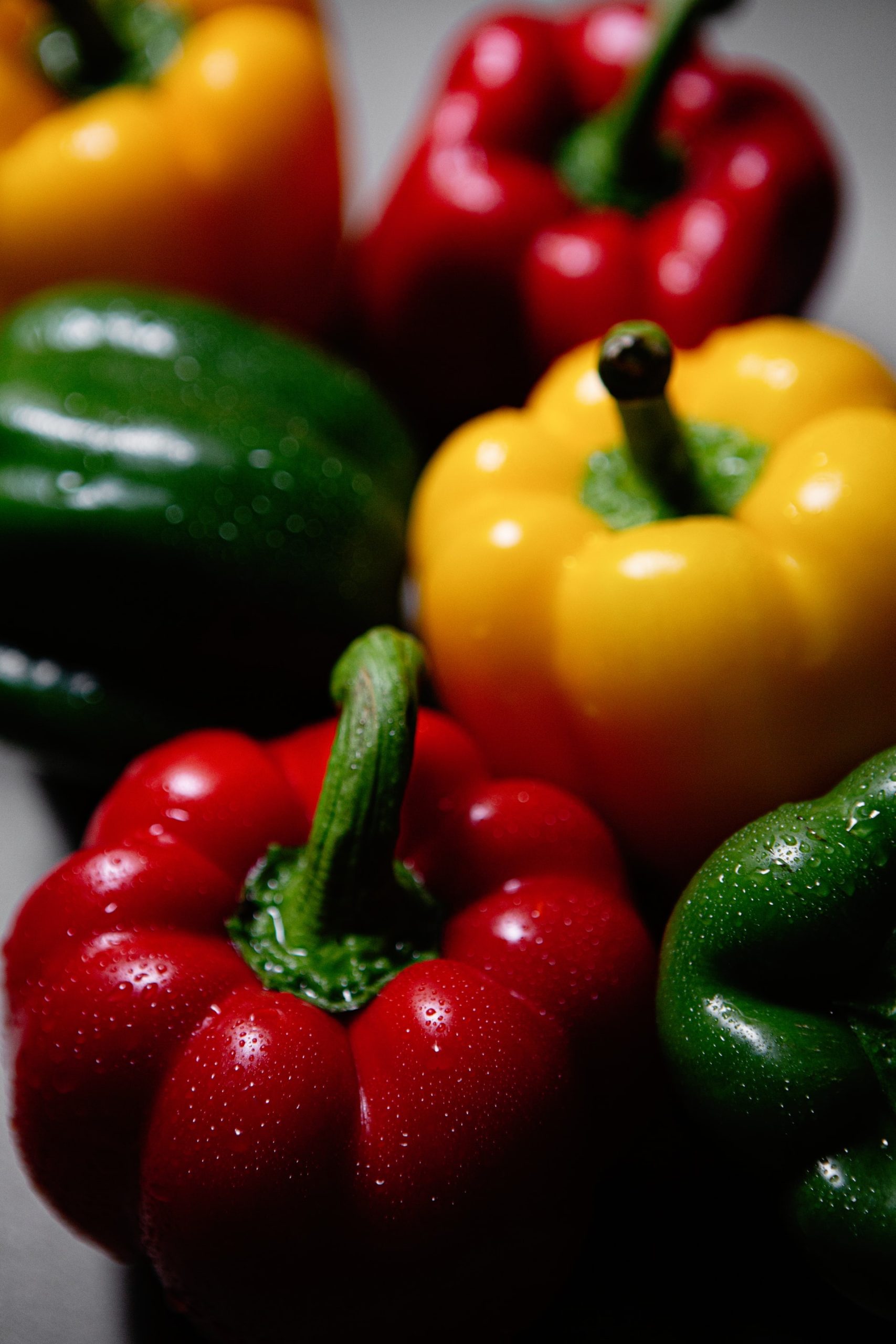Bell peppers are easy to grow and allow you to grow a great assortment. Being one of the more expensive items in the produce department you benefit from huge savings by growing your own.
How To Grow Bell Peppers
Starting Seeds or Buy Seedlings?
To have a successful harvest of bell peppers it is important to start your pepper seeds 6 – 8 weeks before the final frost date in your area. They can have a fairly long season, you must start them early. Your goal is to have the peppers harvested before your first frost. Because they are a hot weather loving plant they will not survive a frost.
By starting your plants from seed will save you money and allow you to grow a larger assortment of peppers.
Starting Seeds Indoors.
To start seeds indoors you will need:
- a small tray, look for one that comes with planting cells and a clear lid if possible, (seeds like heat and moisture to germinate)
- Disposable plastic cups are also a good option (Solo cups work great and you can reuse them over and over to start all your seedlings, be sure to give each cup drainage holes)
- Potting soil (look for a light weight one with amendments already added like pearlite and peat moss
- pepper seeds
- heating mat (optional)
Fill the cells, cups or whichever seed starting container you choose with potting soil. Water well allowing the excess water to drain off.
Tip: Potting soil is quite light and when watered from the top it can spill over the edges of the container making a mess. Consider bottom watering to keep everything nice and clean. Simply place the containers in a tray or sink and fill with water allowing it to be soaked up from the bottom.
Place the planted trays someplace warm and sunny or on a heating mat if you have one available. Keep the soil moist but not saturated. The seeds should start germinating within 10 days but could take up to 3 weeks.
Once the seedlings start to get a little leggy it will be time to transplant to a larger container.

Hardening Off The Plants
Hardening Off is the process of getting plants acclimated to the outdoor environment. The elements like wind and sun can kill tender seedlings if rushed. Do not move bell peppers into the garden until all chances of frost are over.
To harden off your peppers you will move the plants outdoors. Start this once the days are a bit warmer. Place the plants where they will receive some sun, where it is warm but not hot and protected from any harsh winds.
Over the next week or two allow the plants to stay outdoors for a longer period of time. When you are confident they have acclimated to the outdoors fully you can proceed with planting.

Where To Plant Bell Peppers
Peppers love it hot so planting them in a full sun location is best.
Work the soil well adding amendments like compost, peat most and manure. Space the plants 18 – 20 inches apart. Water the plants well and mulch if that is a practice you follow.
Mulching helps keep the ground wet and prevents the rots from drying out.
Bell Peppers will also grow well in containers. Choose a container that is at least 3 liters and has drainage holes. One thing to note is you will have to water daily when the weather turns hot. Containers will dry out quickly.
Caring For Bell Pepper Plants
Bell Pepper plants branch out from a single stem and can get quite top heavy with fruit. It is not uncommon for the plants to get tippy. Supporting the plants with bamboo stakes is a good idea if you find your plants starting to get top heavy.
Do not let the plants get too dry. It is important to have consistent watering, especially when they are growing peppers.
Do I Need to Fertilize My Bell Pepper Plants?
You can choose to use a water soluble fertilizer once every 2 – 3 weeks. Choose one that is a balanced 20 – 20 – 20 for the first month than switch to one where the middle number is the highest. This will encourage flowering. Once fruit is set and growing switch to plan water until harvest.

Harvesting Bell Peppers
You can begin harvesting bell peppers when they reach the desired size you are looking for. The longer you leave the pepper on the plant for will make for a sweeter pepper. Peppers are often green but will change colour as they ripen. And example if the red and green peppers you see in the store. They are the exact same pepper, the red ones were ripened longer therefore the change in colour.
Using a sharp knife or scissors to cut the stem off the bell pepper to harvest.
Store in the fridge for up to 2 weeks.
One Final Note: you may have seen the image that made its way around the internet a few years back talking about male and female peppers. It referenced the bumps on the bottom of the pepper & that the sex of the fruit was differentiated by how many bumps the pepper had. This is a myth! Peppers are neither male nor female.
This was written for and first shared over at Earth, Food and Fire.









